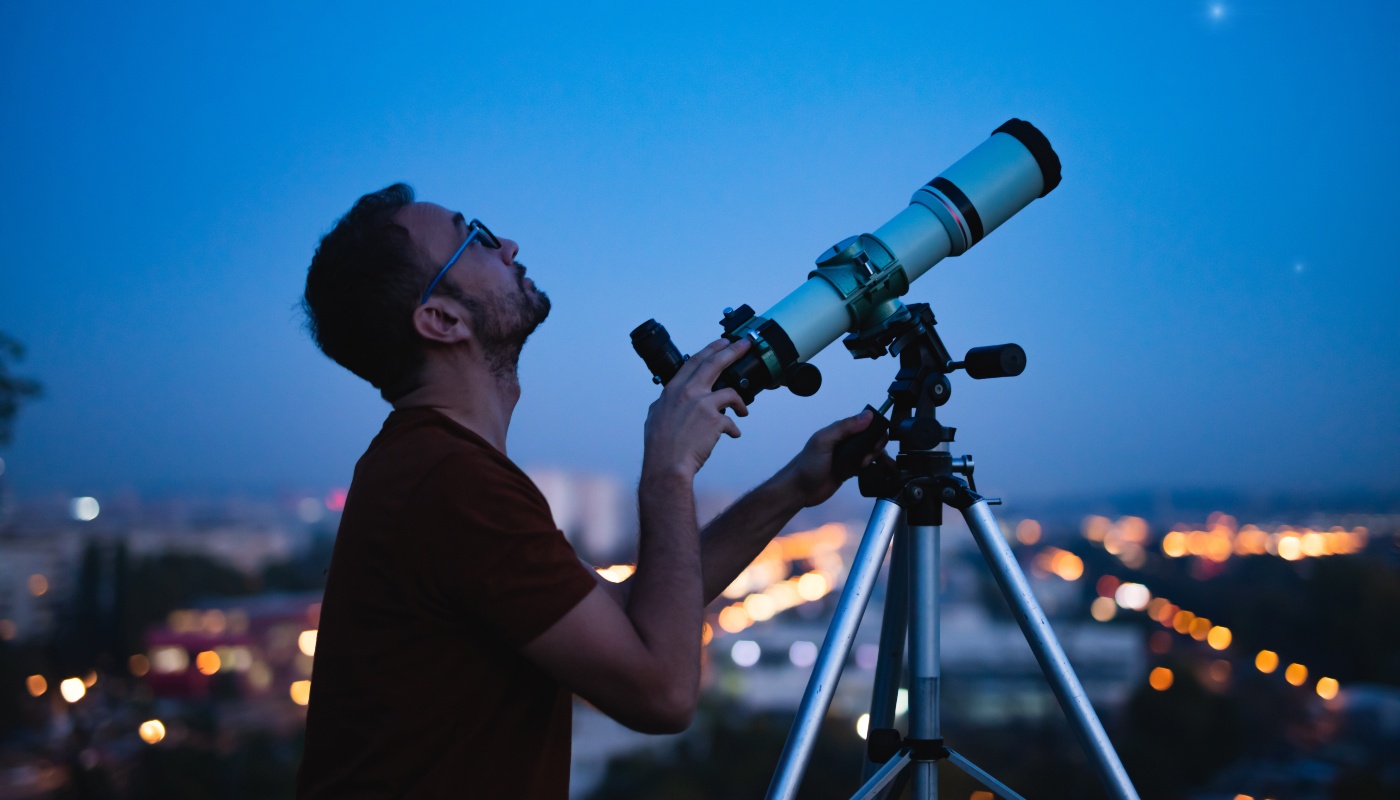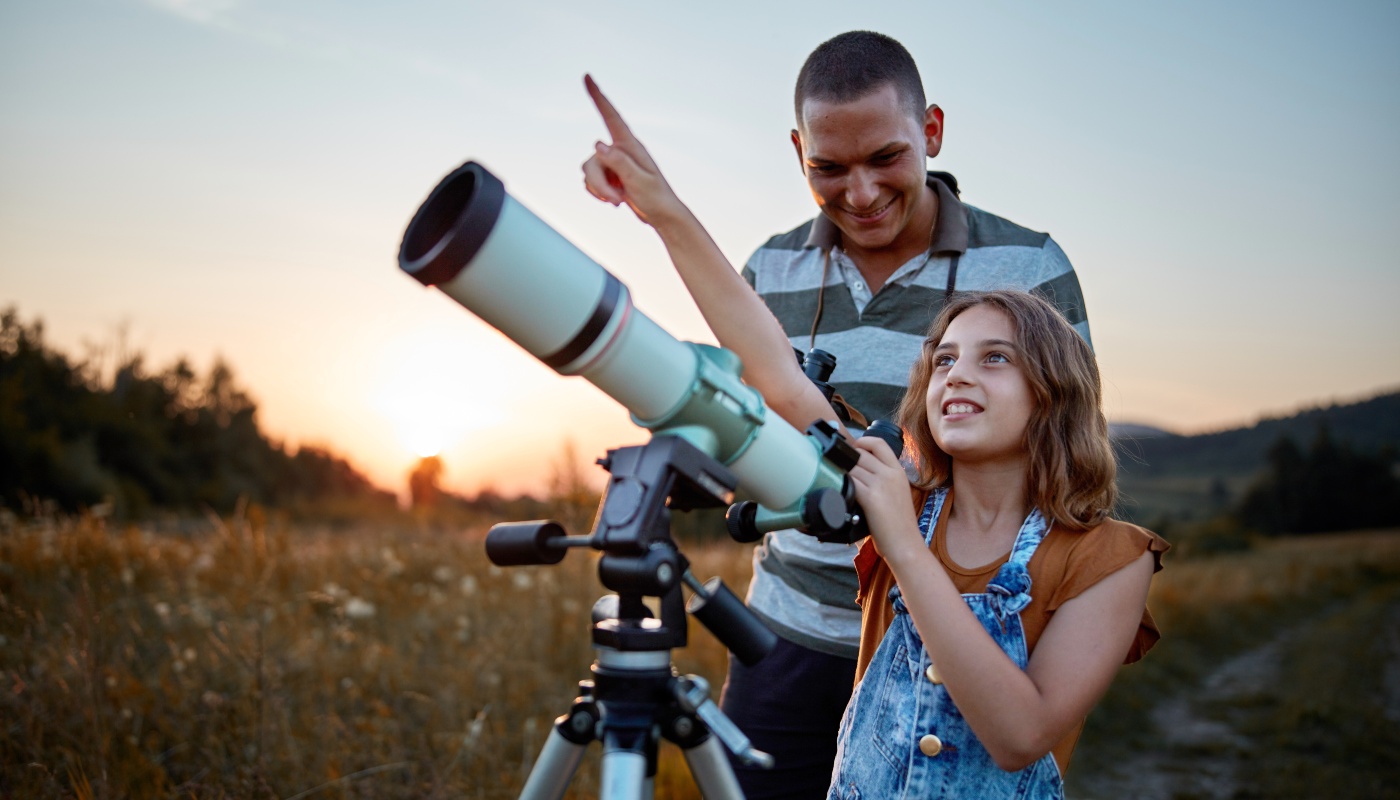Discover astronomy tourism
We tell you about the best destinations for stargazing in Spain. Don’t miss out!
TRAVELLING WITH TASTE
Share

What is astrotourism?
Astrotourism or astronomy tourism is a leisure activity that consists of observing the night sky to appreciate the beauty of the sky and all its stars. This type of tourism is increasingly gaining in popularity, and it’s no surprise. In an urbanised and technological society where we are constantly chased by stress, being able to enjoy a moment of peace and quiet in the heart of nature is extremely comforting. Additionally, astrotourism stands out for being sustainable and responsible, having a positive impact on the environment and helping to revitalise people away from the big cities. Although it can be done more professionally, with guides, telescopes or even from an observatory, the great thing about astrotourism is that anyone can enjoy it, even at beginner level. You just need to find a great destination and set your sights on the stars.
Where can you enjoy astrotourism in Spain?
Thanks to its excellent climate, spectacular scenery and clear skies, Spain is a perfect place for astrotourism. In fact, our country has a plethora of Starlight destinations and reserves, a certification from the Starlight Foundation which approves spaces with an excellent sky quality and which represent an example of protection and preservation. Below, we show you the best locations to enjoy astrotourism in Spain:
La Sierra de Gata
The Sierra de Gata mountain range is located in the far north-west of the province of Cáceres and, thanks to its abrupt landscapes, it offers spectacular views from its highest peaks. Some of the places in the Sierra de Gata where you can stargaze include Almenara tower, Trevejo castle, Dios Padre hermitage or the Rivera de Gata reservoir.
The island of La Palma
Thanks to its dark and clear skies most of the year round, the island of La Palma is one of the most privileged areas for astronomical observation. In fact, it has been a Starlight tourist destination since 2007. Although the magic of the night sky can be enjoyed from nearly any part of the island, we recommend taking a trip to the Roque de los Muchachos Telescope Complex, situated at the edge of the Caldera de Taburiente National Park at an altitude of 2,396 metres.
El Montsec
The best sky in Catalonia can be found in the Montsec mountain range, which has held a dual Starlight Destination and Reserve certification for many years. This unique spot is home to the Montsec Astronomical Park, a place for scientific outreach, research and training, where astronomy tourism activities also take place.
The Cíes Islands
Night skies can be admired in the Cíes Islands in all their splendour, and in the heart of nature. This idyllic location belongs to the Atlantic Islands of Galicia National Park and offers unique opportunities for stargazing and is accredited by the Starlight Foundation.

Sierra Morena
The Sierra Morena mountain range in Andalusia stands out as one of the best places in the world for stargazing, with an extensive network of Starlight tourist destinations spread across more than 400 kilometres between Huelva, Jaén, Córdoba and Seville.
Gredos Regional Park
Gredos Regional Park in Ávila also holds the dual Starlight Destination and Reserve certification. Throughout this area, we can find a series of stargazing viewpoints in towns like Santiago de Tormes, Navatejares or Puerto Castilla, to enjoy unique experiences under the starry sky.
The region of Gúdar-Javalambre
Astrotourism is one of the strengths of the region of Gúdar-Javalambre, the capital of which is Mora de Rubielos. Each town has an astronomical viewpoint and, throughout the year, various experiences take place for people to enjoy the wonderful evening spectacle offered by nature.
Aras de los Olmos
In Aras de los Olmos, there are three astronomical observatories. This small town in Valencia, situated in the territory of Alto Turia, is within a Starlight reserve thanks to the quality of its skies.

Features and examples of stargazing tourism
One of the main features of astrotourism is the chance to observe specific astronomical events, including the famous Perseids in August, where you can enjoy the most spectacular meteor shower of the year. Watching these fleeting flashes of light as they cross the night sky is a unique experience.
Another popular activity in astrotourism is hiking. In areas away from the light pollution of big cities, night-time hikes offer the chance to become immersed in nature and admire the grandeur of the universe. Walking under the stars, with nothing but the moonlight and constellations to guide you, creates a unique connection with the natural environment and the cosmos.
Astronomical observatories are also key destinations for astrotourism enthusiasts. These centres offer the opportunity to learn about astronomy, observe planets, stars and galaxies through powerful telescopes, and take part in educational activities and special events related to space. The possibility of interacting with astronomers and experts in the field adds an extra dimension to the experience, enabling visitors to delve deeper with their understanding of the universe.
In addition to observing and learning about the cosmos, many fans of astrotourism also enjoy capturing the beauty of the night sky through photography. From starry landscapes to detailed pictures of planets and galaxies, astrophotography offers a unique way of documenting and sharing the wonders of the universe.






